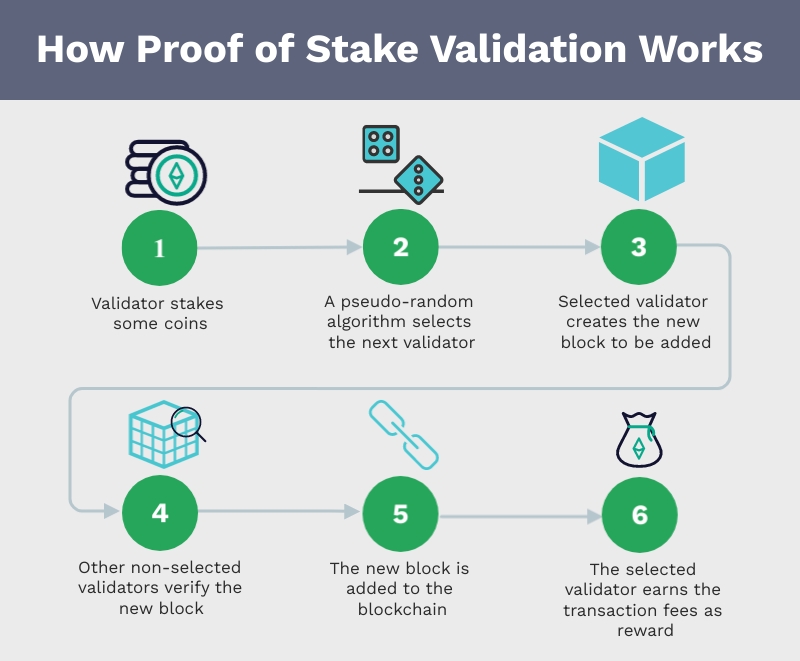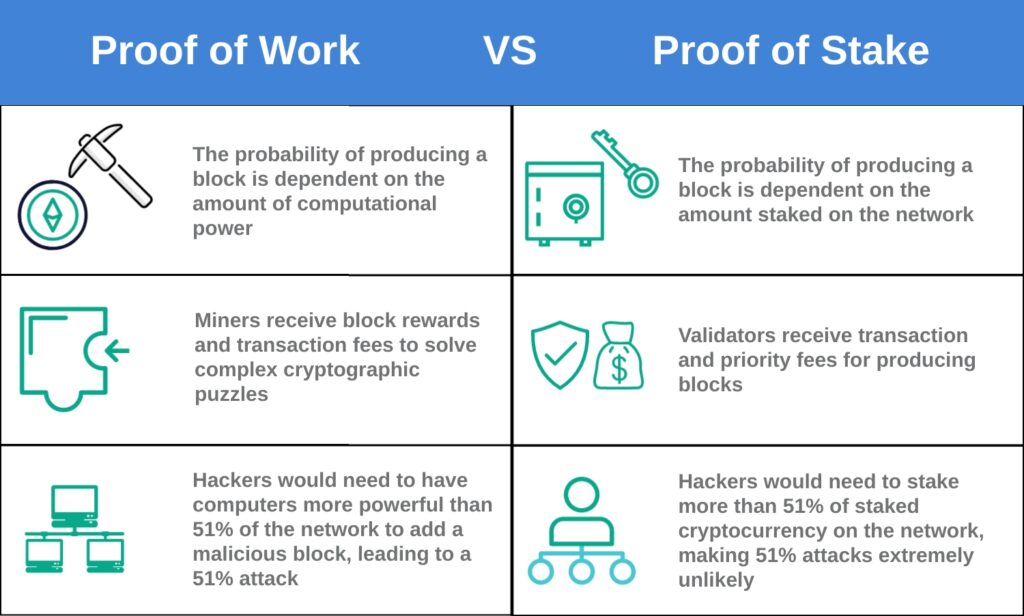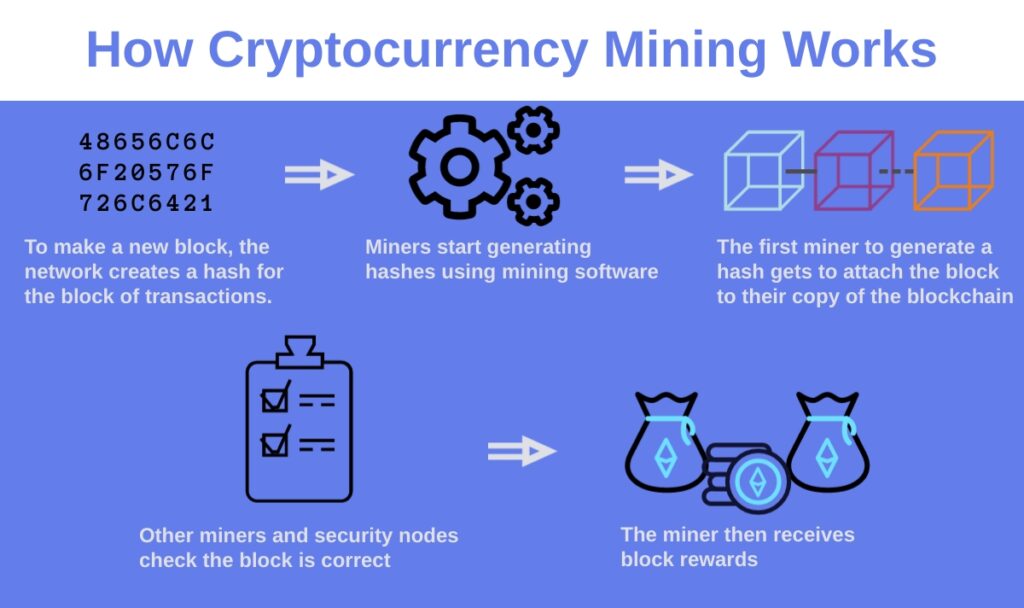Introduction
At the heart of every blockchain lies a consensus mechanism—a protocol that ensures all participants in the network agree on the validity of transactions. Among the various methods developed, Proof of Work (PoW) and Proof of Stake (PoS) stand out as the most widely used and debated.
Understanding the difference between these two systems is critical for investors, developers, and blockchain enthusiasts. This article breaks down how each mechanism works, compares their strengths and weaknesses, and explores their real-world applications and environmental implications.

What is a Consensus Mechanism?
A consensus mechanism is the method by which decentralized blockchain networks agree on a single source of truth. Since there’s no central authority in systems like Bitcoin or Ethereum, these protocols ensure that:
- Only valid transactions are recorded.
- The same transaction isn’t recorded twice (no double spending).
- All nodes in the network reach agreement, even if some are faulty or malicious.
1. Proof of Work (PoW)
Definition
Proof of Work is the original blockchain consensus algorithm, introduced by Bitcoin in 2009. It relies on computational power to validate transactions and secure the network.
How It Works (Step-by-Step)
- Miners compete to solve complex cryptographic puzzles.
- The first miner to solve the puzzle validates the block of transactions.
- The block is broadcast to the network for verification.
- The miner is rewarded with cryptocurrency (e.g., Bitcoin).
- The block is added to the blockchain, and the process restarts.
Key Characteristics
- Security: Extremely secure due to the cost and complexity of the mining process.
- Decentralization: Encourages a wide distribution of mining nodes.
- Energy Consumption: Requires massive electricity, especially in large networks like Bitcoin.
Popular Blockchains Using PoW
- Bitcoin (BTC)
- Litecoin (LTC)
- Dogecoin (DOGE)
- Monero (XMR)
2. Proof of Stake (PoS
Definition
Proof of Stake is a newer, energy-efficient consensus mechanism where validators are chosen based on the number of tokens they “stake” in the network. Introduced as an alternative to PoW, it aims to improve scalability and reduce environmental impact.
How It Works (Step-by-Step)
- Users lock up a certain amount of cryptocurrency as a stake.
- The network randomly selects a validator to create the next block, weighted by their stake.
- If the validator acts honestly, they receive a reward.
- If they act maliciously, part or all of their stake can be slashed (burned).
- The process continues with the next block.
Key Characteristics
- Efficiency: Requires minimal energy compared to PoW.
- Speed: Faster transaction times and better scalability.
- Security: Still developing methods to match PoW’s proven track record.
Popular Blockchains Using PoS
- Ethereum (ETH – since The Merge in 2022)
- Cardano (ADA)
- Solana (SOL)
- Polkadot (DOT)
- Tezos (XTZ)

3. Key Differences: Proof of Work vs Proof of Stak
| Feature | Proof of Work (PoW) | Proof of Stake (PoS) |
|---|---|---|
| Resource Requirement | High computational power & energy | Cryptocurrency stake |
| Validation Method | Solving mathematical puzzles | Random selection weighted by stake |
| Rewards | Mining reward + transaction fees | Staking reward + transaction fees |
| Security | Proven but expensive to maintain | Efficient but still evolving |
| Scalability | Limited (slow transactions) | Better scalability and speed |
| Environmental Impact | High (energy-intensive) | Low (eco-friendly) |
| Hardware Needs | Specialized (ASICs, GPUs) | Regular computer or node software |
| Attack Resistance | Costly to attack (needs 51% of hash power) | Needs 51% of staked tokens |

4. Pros and Cons
Proof of Work – Pros
- Extremely secure and battle-tested (Bitcoin’s 10+ years).
- Encourages decentralization in early stages.
- Incentivizes miners through clear rewards.
Proof of Work – Cons
- Massive energy consumption.
- Expensive and hardware-intensive.
- Slower transaction speeds.
Proof of Stake – Pros
- Environmentally sustainable.
- Cheaper to participate in validation.
- High throughput and lower transaction fees.
Proof of Stake – Cons
- “Rich get richer” risk (wealth concentration).
- Still less proven than PoW.
- Some systems may be more centralized (few large stakers).
5. The Shift from PoW to PoS: Ethereum’s Example
Ethereum is the most high-profile blockchain to transition from PoW to PoS, which it did through a process called “The Merge” in September 2022.
- Before: Ethereum used PoW, which made it secure but energy-consuming.
- After: Ethereum 2.0 now uses PoS, reducing energy usage by over 99.95%.
- This shift was driven by the need for scalability, sustainability, and future growth.
6. Environmental Considerations
Proof of Work has been criticized for its carbon footprint. Bitcoin mining, for instance, has been compared to the energy usage of small countries. In contrast:
- PoW = Energy intensive
- PoS = Energy efficient
As climate awareness grows, many investors, governments, and developers are pushing for more sustainable alternatives—making PoS and green consensus models increasingly attractive.
7. Which Is Better? It Depends.
| Use Case | Best Consensus Mechanism |
|---|---|
| Maximum Security & Immutability | PoW (e.g., Bitcoin) |
| Eco-friendly & Fast Payments | PoS (e.g., Solana, Cardano) |
| Smart Contracts & dApps | PoS (e.g., Ethereum, Polkadot) |
| Store of Value | PoW (Bitcoin remains dominant) |
No one-size-fits-all solution exists. Many blockchains are exploring hybrid models or developing new systems like Proof of History (Solana) or Proof of Authority to meet specific needs.

Conclusion
Both Proof of Work and Proof of Stake have crucial roles to play in the blockchain ecosystem. While PoW laid the foundation of decentralized trust with Bitcoin, PoS is paving the way for a scalable and sustainable future.

